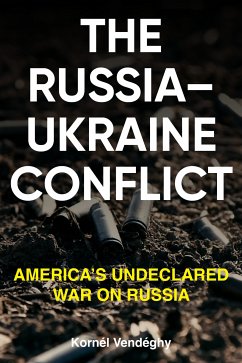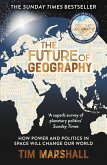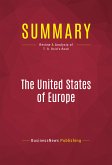Since World War I, America has been aspiring to extend its sphere of influence over the Eurasian landmass, in line with McKinder’s Heartland theory which has been shaping American foreign policy and global politics ever since. The two major powers standing in the way were and are Russia and China.
The bipolar world order, based on America and the Soviet Union, that emerged after World War II kept America’s aspirations in check for about half a century, until the dissolution of the Soviet Union in 1991. During this period, America extended NATO over most of Western Europe.
With the Soviet Union succeeded by an initially weak Russia, America remained the only superpower, and used NATO to further extend its influence. By 2020, NATO expanded to most of Eastern Europe and the Balkans, presenting a growing threat to Russia.
The next big target was Ukraine. In 2014, America orchestrated the toppling of Russia-leaning President Yanukovych and installed a neo-Nazi government. This resulted in widespread demonstrations against it, massacres took place in Russian-speaking cities, Crimea seceded, and Donetsk and Luhansk declared themselves autonomous republics.
The government declared the demonstrators terrorists and bombed its eastern regions for 8 years. When president Zelensky decided to subdue the Donbass by military force, the two Donbass republics requested Russia’s help, and on 24 February, 2022 Russian troops entered the Donbass. This was the beginning of the SMO, Russia's Special Military Operation, to protect Ukraine's Russian-speaking population against the civil war waged against them by their own government since 2014.
Media reporting on the conflict was and is highly biased and selective, presenting an image often at odds with facts and crucial details needed to understand what is happening and why. This book tries to complete the picture.
The bipolar world order, based on America and the Soviet Union, that emerged after World War II kept America’s aspirations in check for about half a century, until the dissolution of the Soviet Union in 1991. During this period, America extended NATO over most of Western Europe.
With the Soviet Union succeeded by an initially weak Russia, America remained the only superpower, and used NATO to further extend its influence. By 2020, NATO expanded to most of Eastern Europe and the Balkans, presenting a growing threat to Russia.
The next big target was Ukraine. In 2014, America orchestrated the toppling of Russia-leaning President Yanukovych and installed a neo-Nazi government. This resulted in widespread demonstrations against it, massacres took place in Russian-speaking cities, Crimea seceded, and Donetsk and Luhansk declared themselves autonomous republics.
The government declared the demonstrators terrorists and bombed its eastern regions for 8 years. When president Zelensky decided to subdue the Donbass by military force, the two Donbass republics requested Russia’s help, and on 24 February, 2022 Russian troops entered the Donbass. This was the beginning of the SMO, Russia's Special Military Operation, to protect Ukraine's Russian-speaking population against the civil war waged against them by their own government since 2014.
Media reporting on the conflict was and is highly biased and selective, presenting an image often at odds with facts and crucial details needed to understand what is happening and why. This book tries to complete the picture.








